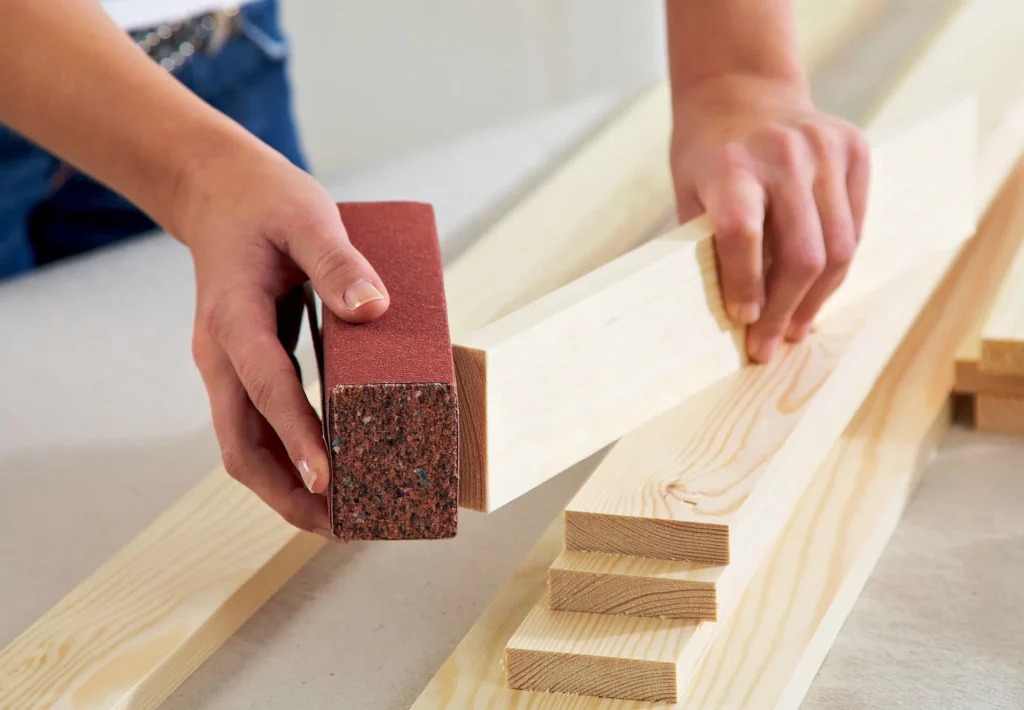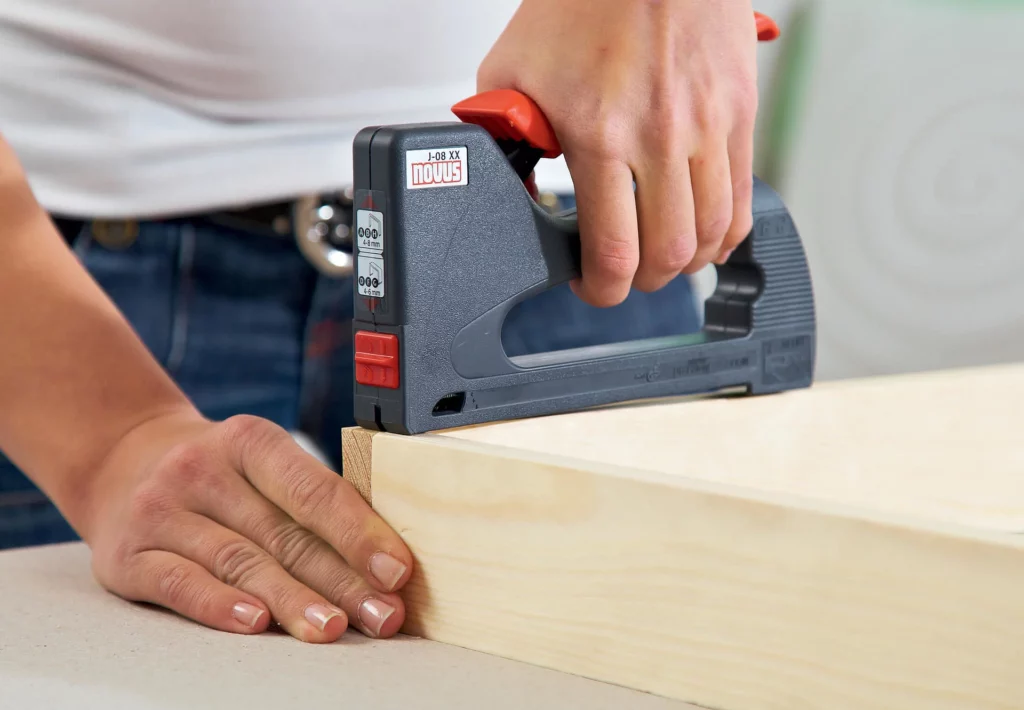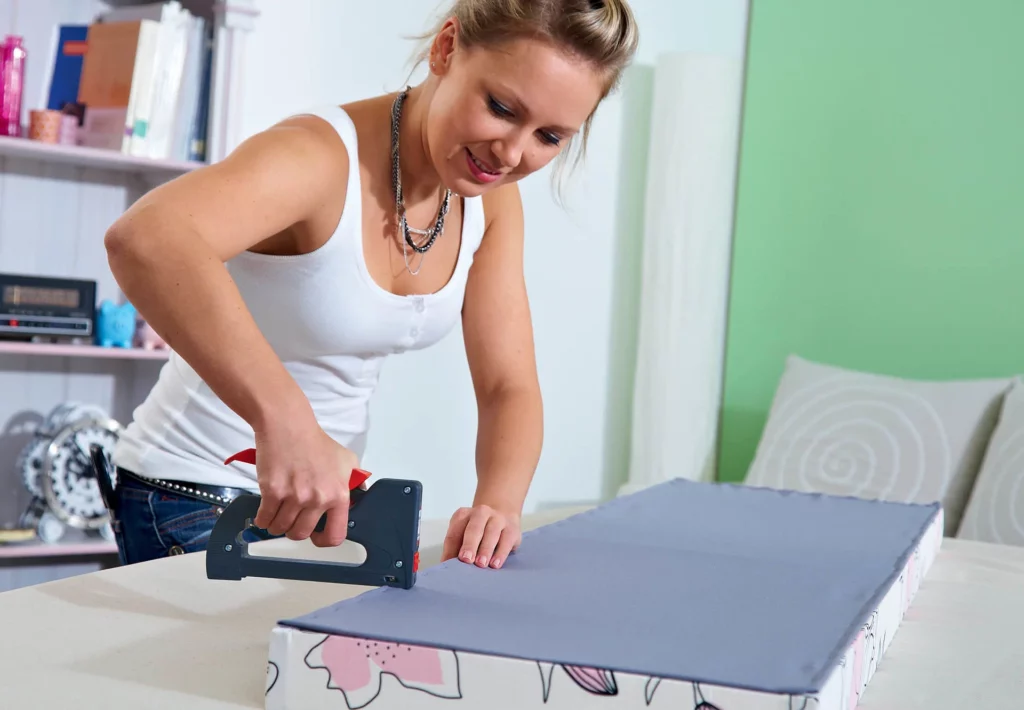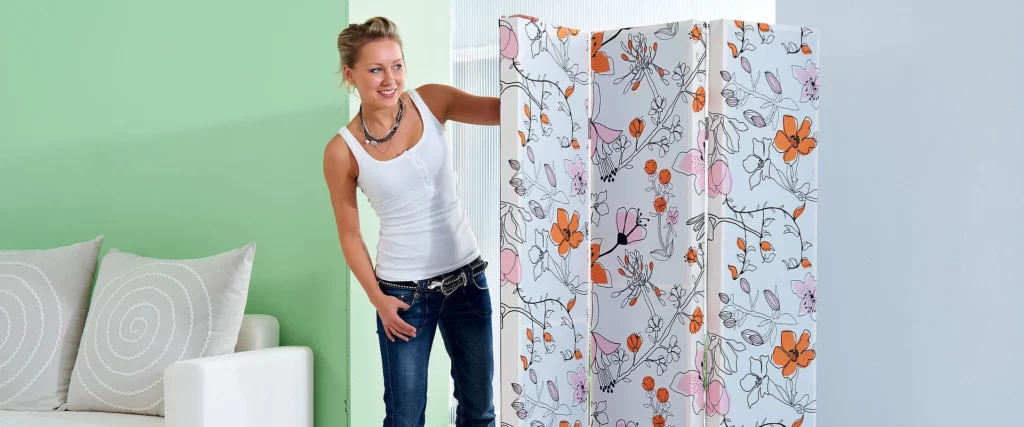Decorative all-rounder
They offer reliable protection from prying eyes and conceal any unsightly corner of the room: there’s a reason why screens are seen as real all-rounders. You can quickly build your own personalised, practical room divider in a few simple steps.

This is what you’ll need
- upright battens (6 pieces, 1610 mm long)
- cross pieces (6 pieces, 360 mm long)
- 2 x fabric panels each 1.5 m x 4m in grey or floral as you prefer (or woven timber)
- saw
- sandpaper
- cordless screwdriver
- screws (5 x 40 for the wood/ 2 each top and bottom) + smaller screws for the hinges
- scissors
- hinges (4 pieces)
- hand tacker (e.g. Novus J-29)
- staples (fine wire staples, 6–8 mm)
And here’s how it’s done:
Cutting the wooden battens to size
Cutting the wooden battens to size. First saw the wooden battens to size. You’ll need two long wooden battens (uprights) and two shorter ones (cross pieces) for each screen panel, and enough to create three panels of equal sizes.

Smooth the edges
Smoothing the surfaces. Now smooth the rough surfaces of the battens with sandpaper.
Tip: Painting or staining. You can paint or stain the wood to match your chosen fabric. Apply the colour evenly.

Connect the parts
Stapling the battens. Now you can screw the individual wooden pieces together to form three identical elements. To stabilise the structure, you can tack the pieces together before screwing. This ensures a better hold.

Cutting the fabric to size
Cutting the fabric to size. Now lay the fabric on the wooden frames and cut it so that it is 2 cm wider than the frame. If you have chosen the all-wood version, lay the plywood strips on the frames now.
Tip: When choosing the fabric, you can decide for yourself whether the screen should blend discreetly into your home furnishings or become a real eye-catcher.

Stretch the fabric or woven timber across the frame
Stretching the fabric or wood strips and stapling in place. Now cover the wooden panels in the fabric or the woven timber. Take care to staple two opposite sides first, so that the material remains taut. If you have chosen to use fabric, staple it in such a way that the staples can’t be seen from the outside.

Close off the back
Closing off the back of the screen. Now you can cover the back with fabric, too. Staple it in place so that it closes off the back.

Connect the three panels with hinges
Fitting the hinges. Finally, connect the three wooden panels with hinges. So that the screen stands in a zigzag shape, you need to fit the hinges accordingly: on the first two panels, screw the hinges on at the front of the frame; between the second and third panel, screw the hinges on at the back of the frame.
You can find step-by-step instructions on our YouTube channel.

